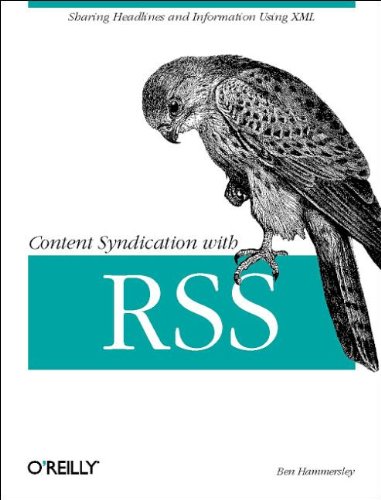Articoli correlati a Content Syndication With Rss

RSS is sprouting all over the Web, connecting weblogs and providing news feeds. Originally developed by Netscape in 1999, RSS (which can stand for RDF Site Summary, Rich Site Summary, or Really Simple Syndication) is an XML-based format that allows web developers to describe and syndicate web site content. Using RSS files allows developers to create a data feed that supplies headlines, links, and article summaries from a web site. Other sites can then incorporate them into their pages automatically. Although RSS is in widespread use, people struggle with its confusing and sometimes conflicting documentation and versions. Content Syndication with RSS is the first book to provide a comprehensive reference to the specifications and the tools that make syndication possible.Content Syndication with RSS offers webloggers, developers, and the programmers who support them a thorough explanation of syndication in general and RSS in particular. Written for web developers who want to offer XML-based feeds of their content, as well as developers who want to use the content that other people are syndicating, the book explores and explains metadata interpretation, different forms of content syndication, and the increasing use of web services in this field.This concise volume begins with an introduction to content syndication on the Internet: its purpose, limitations, and traditions, and answers the question of why would you consider "giving your content away" like this? Next, the book delves into the architecture of content syndication with an overview of the entire system, from content author to end user on another site. You'll follow the flow of data: content, referral data, publish-and-subscribe calls, with a detailed look at the protocols and standards possible at each step. Topics covered in the book include:
- Creating XML syndication feeds with RSS 0.9x and 2.0
- Beyond headlines: creating richer feeds with RSS 1.0 and RDF metadata
- Using feeds to enrich a site or find information
- Publish and subscribe: intelligent updating
- News aggregators, such as Meerkat, Syndic8, and Newsisfree, and their web services
- Alternative industry-centric standards
Le informazioni nella sezione "Riassunto" possono far riferimento a edizioni diverse di questo titolo.
Ben Hammersley is an English emigre, living in Sweden, with his wife, three greyhounds, a few hundred deer, and a two-way satellite connection. For a day job, he writes for the British national press, appearing in The Times, The Guardian, and The Observer, but in his free time, he blogs excessively at www.benhammersley.com and runs the Lazyweb.org ideas site. As a member of the RSS 1.0 Working Group, he survived the Great Fork Summer, and as a journalist he has been accosted by the secret police of two countries. To this day, he doesn't know which was worse.
Le informazioni nella sezione "Su questo libro" possono far riferimento a edizioni diverse di questo titolo.
- EditoreOreilly & Associates Inc
- Data di pubblicazione2003
- ISBN 10 0596003838
- ISBN 13 9780596003838
- RilegaturaCopertina flessibile
- Numero edizione1
- Numero di pagine208
- Valutazione libreria
Compra nuovo
Scopri di più su questo articolo
Spese di spedizione:
GRATIS
In U.S.A.
I migliori risultati di ricerca su AbeBooks
Content Syndication with RSS
Descrizione libro Paperback. Condizione: New. Codice articolo Abebooks144910

